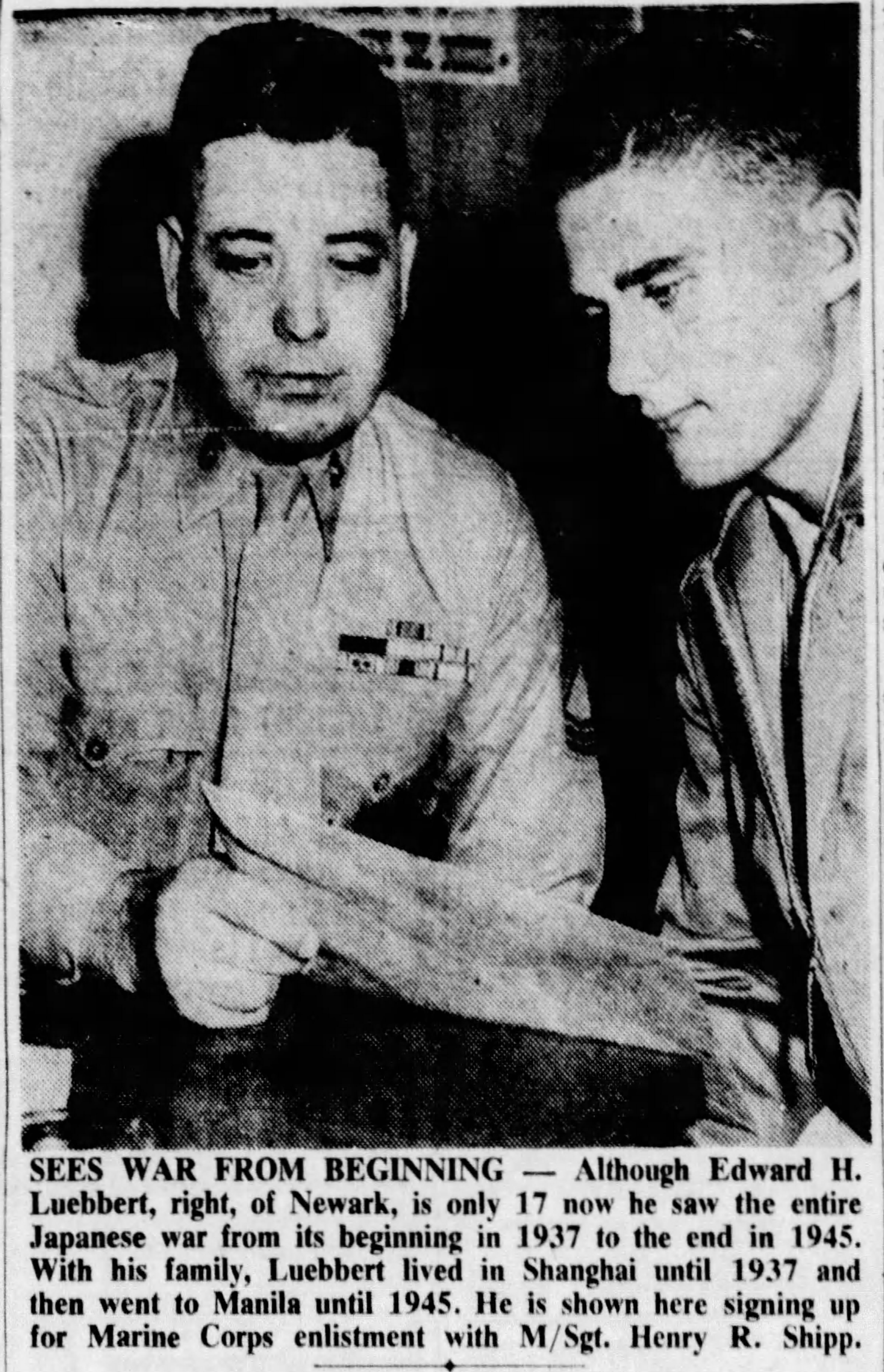Posted: September 12th, 2016 | No Comments »
Tai’s for Linens – Mr C.T. Tai’s store opened around 1910-1912 on Route Prosper Paris in Shanghai’s Frenchtown (Tianping Road now) on the far western side of the French Concession close to Siccawei (Xujiahui now). “One price” I take it refers not to everything being one price (the contemporary meaning) but that tourists and Shanghailanders were guaranteed the same prices as locals (though probably unlikely in the actualite, as the French say). Tai’s main competition was the linen shops (and underwwear sellers) over on Yates Road (Shimen No.1 Road these days), known locally as “Pantie Alley”. The shop was a retail outlet for C.T. Tai & Sons (Manufacturers and Exporters), Embroidered Linens, who produced monogrammed handkerchiefs etc.
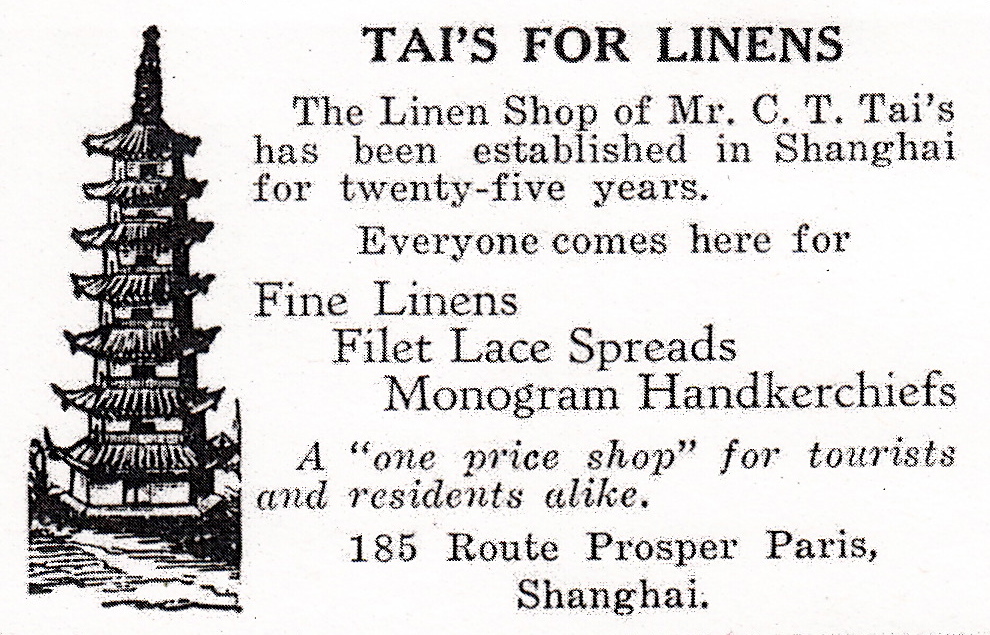
Posted: September 11th, 2016 | No Comments »
A timely offering from June Teufel Dreyer on the troubled history of Sino-Japanese relations……
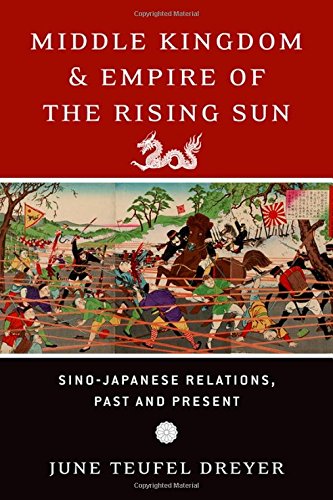
June Teufel Dreyer’s Middle Kingdom and Empire of the Rising Sun provides a highly accessible overview of one of the world’s great civilizational rivalries. Dreyer, a senior scholar of East Asia, begins in the seventh century in order to provide a historical background for the main story: by the mid-nineteenth century, the shrinking distances afforded by advances in technology and the intrusion of Western powers brought the two into closer proximity in ways that alternately united and divided them. In the aftermath of multiple wars between them, including a long and brutal conflict in World War II, Japan developed into an economic power but rejected any concomitant military capabilities. China’s journey toward modernization was hindered by ideological and leadership struggles that lasted until the death of revolutionary leader Mao Zedong in 1976.
Bringing the narrative up to the present day, Dreyer focuses on the issues that dominate China and Japan’s fraught current relationship: economic rivalry, memories of World War II, resurgent nationalism, military tensions, Taiwan, the Diaoyu/Senkaku Islands, and globalization. Dreyer argues that recent disputes should be seen as manifestations of embedded rivalries rather than as issues whose resolution would provide a lasting solution to deep-standing disputes. For anyone interested in the political dynamics of East Asia, this integrative history of the relationship between the region’s two giants is essential reading.
Posted: September 10th, 2016 | No Comments »
Sunday, 11th September 2016
4:00 pm – 6:00 pm
Li Room at the Radisson Blu Xingguo Hotel
A Critical View of the History of Chinese Photography
Speaker: Jean Loh

September 8th through 11th marks the 3rd edition of Photo Shanghai, a global art fair dedicated to photographic works of art. To expand our knowledge of photography as an art form that took hold in China, RAS is pleased to invite Jean Loh as our special Art Focus speaker in September.
Contemporaneous with the invention of photography came the outbreak of the First Opium War, along with foreign concessions and settlements in Canton and Shanghai. The 19th Century saw the arrival of photography in China. In the early 20th Century Chinese photography was essentially viewed through the eyes of Westerners: missionaries, archeologists, botanists, and diplomats. Chinese photography proper started in the 1920s – 1930s, during the Republic (Min Guo) period but few documents remain. From the 1950s onward photography’s purpose was to serve the people. Documentary photography only resumed with the launch of Deng Xiaoping’s Reform and Opening. This talk is a subjective retracing of the evolution of documentary photography in China over three decades, from the 1980s and the 1990s, to the early 2000s and today, with selected examples and a questioning of the meaning of documentary in a context of generalised commercial pursuit.
Jean Loh is a graduate of Paris Sciences-Po, with a master degree in the History of Ideas from Sorbonne Pairs-IV. He is the curator and art director of Beaugeste Photo Gallery in Shanghai.
RSVP: artgroup@royalasiaticsociety.org.cn
ENTRANCE: Members: 50 RMB Non members: 100 RMB
includes a glass of wine or soft drink
VENUE: Li Room at the Radisson Blu Xingguo Hotel; 78 Xingguo Lu, near Hunan Lu Shanghai 200052
Posted: September 9th, 2016 | No Comments »
I’m generally pretty good on the old curio and antique shops of Shanghai, but distinctly less so regarding Peking (outside of The Camel Bell and Henri Vetch’s places). As with Shanghai curio shops appeared in the lobbies and adjacent to leading hotels where foreigners stayed – The Camel Bell and Vetch’s French Bookshop were in the lobby of the Peking Hotel. Here’s an advert for The Golden Dragon, which was in the Hotel des Wagon-Lits (which I’ve posted about before – just stick “Wagon-Lits” in the search engine and you’ll get some pictures and luggage labels etc).
So I’m rather bereft on facts – The Golden Dragon was one of a number of retail outlets in the hotel, including American Express. This ad is from the mid-1930s – and I’ve not got anything else I’m afraid…though if anyone does of course I’d love to hear?
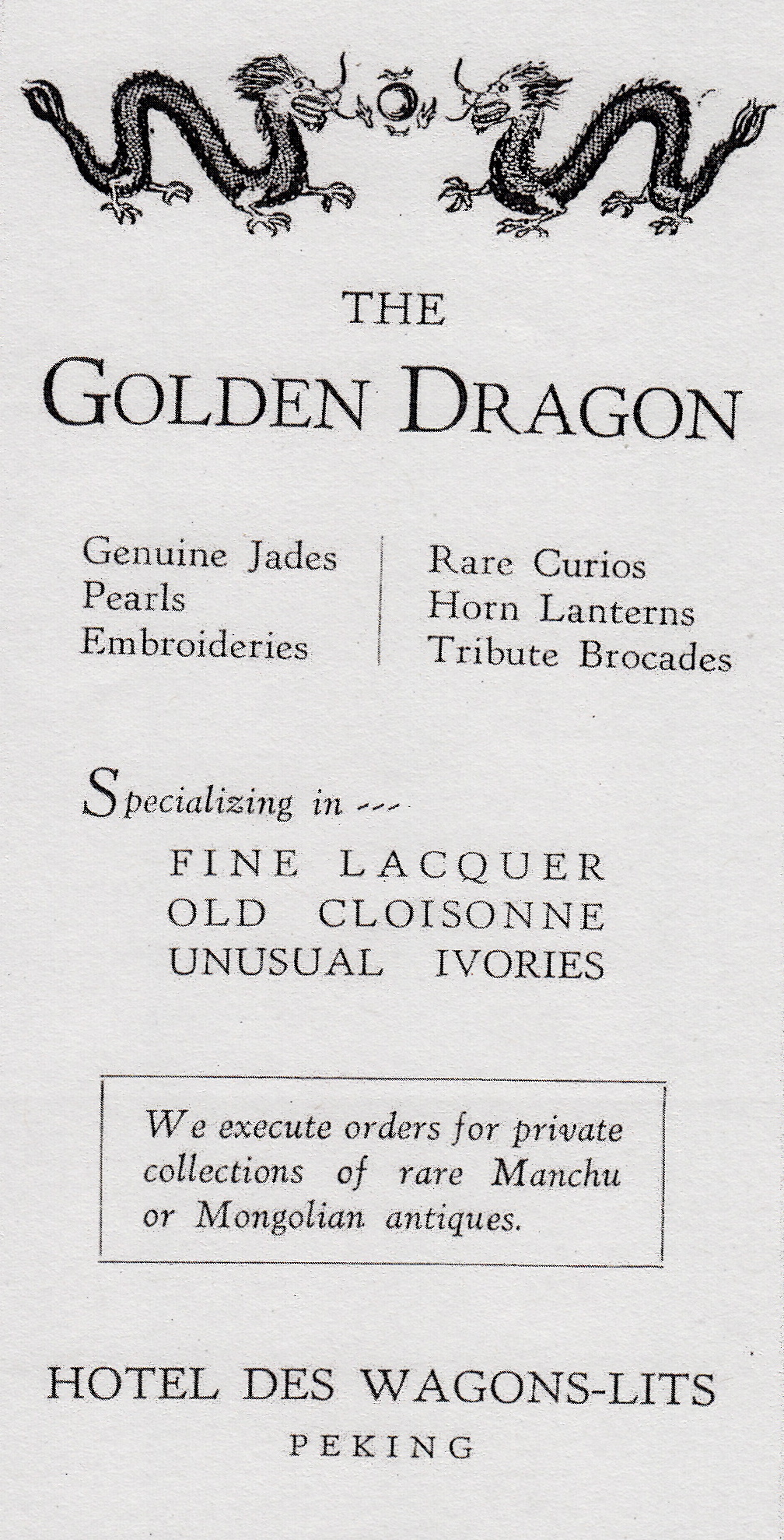
Posted: September 8th, 2016 | No Comments »
Wikipedia has it that the Shanghai and Paris-based Banque Industrielle de Chine was chartered in 1913 and was closed in 1922. However, this advert is from 1925 and they appear to be still in business. This ad also indicates that the bank had an Antwerp branch. Apparently the collapse of the bank, after Chinese borrowers refused to repay in the early 1920s, was a scandal as the establishment of the bank had been a joint project of the French and Chinese governments (according to Xu Guoqi in Strangers on the Western Front the bank was established to handle the finances of the Chinese laborers’ recruited by France to work during the First World War). Others mutter of dark forces on the French right destroying the bank, and allied to the competitor Banque de L’Indochine, bent on undermining the Banque Industrielle. It seems a political face saving fix was eventually found and the bank did not go bankrupt but was closed and funds were injected into other banks.
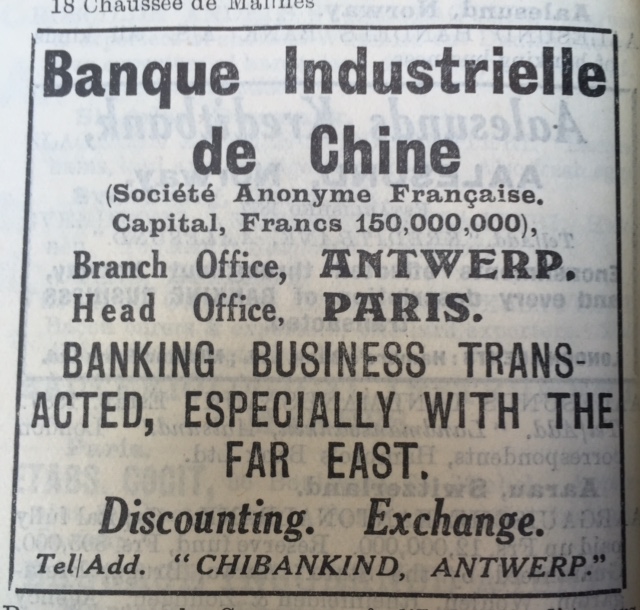
An ad for the bank from 1925
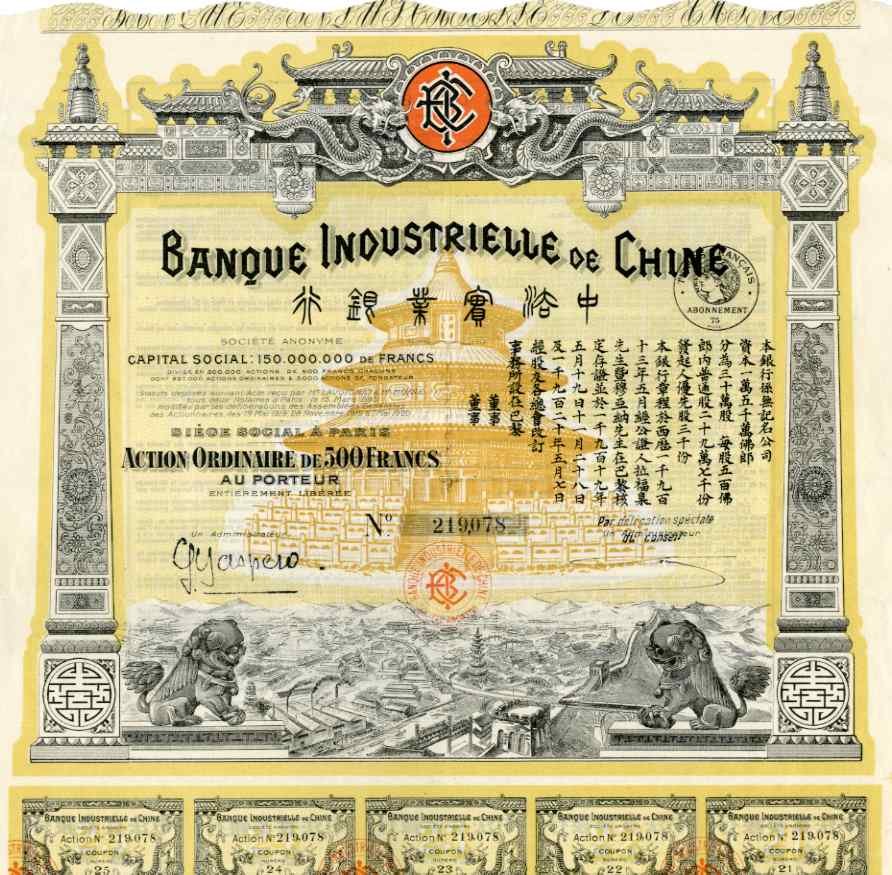
A beautifully ornate Banque Industrielle de Chine bond issuance certificate from 1913
Posted: September 7th, 2016 | No Comments »
In 1927 the beautiful Margaret Livingston was a major film star and The Streets of Shanghai was a much anticipated movie event. Silent stars of the time (now really quite forgotten) were the main stars though a youngish Jason Robards Sr. appeared in the film as did a young Anna May Wong and Toshia Mori, a Japanese actress who had a Hollywood career. Sadly you can’t see the film as it is now officially considered “lost” and it is thought no copy exists anywhere (which is very sad). However, a few stills from lobby cards exist (see below).
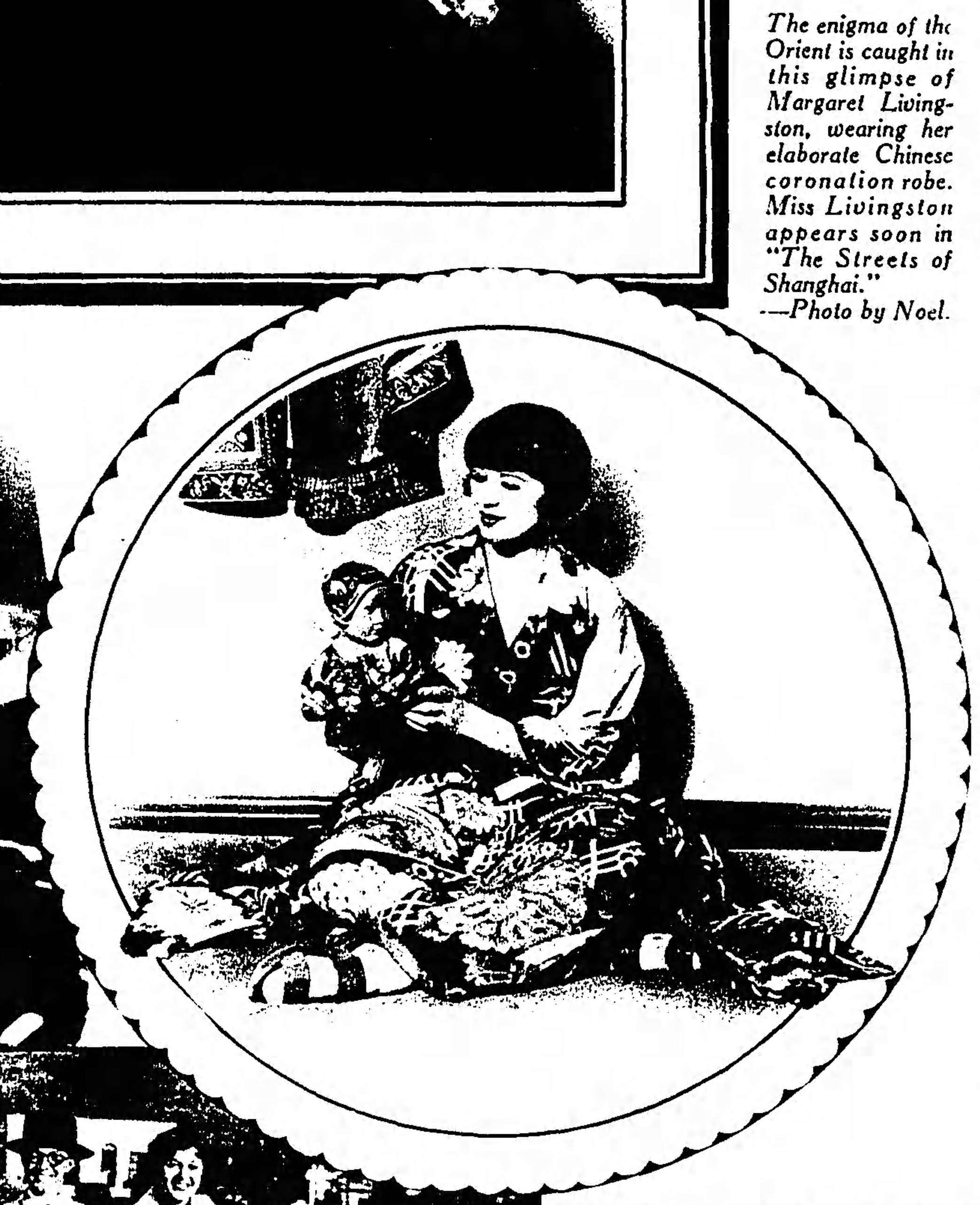
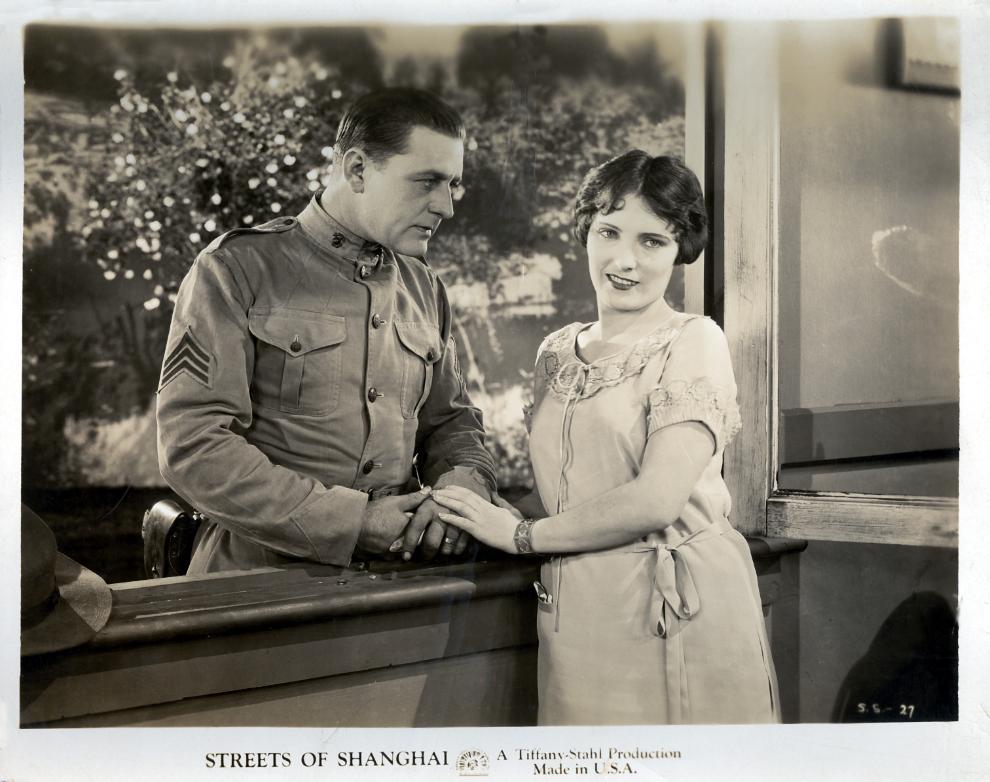
one of the few remaining stills featuring the movie’s stars Kenneth Harlan and Pauline Starke
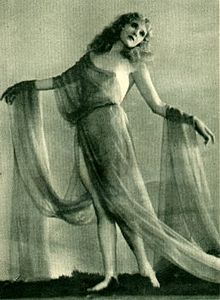
Margaret Livingston
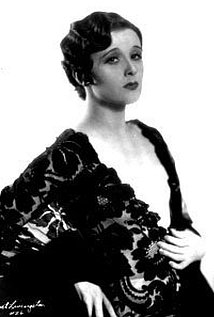 Some more Margaret Livingston
Some more Margaret Livingston
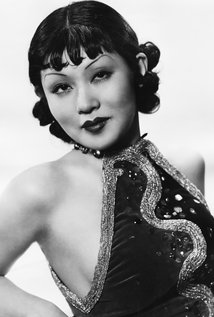 Toshia Mori
Toshia Mori
Posted: September 6th, 2016 | No Comments »
I must have seen a hundred adverts for Klim brand milk in old Shanghai – the leading brand of powdered milk brought in from the States. But I only just realised Klim is milk backwards!! What a genius!
By the way Getz Brothers, based in California, expanded into Shanghai in the 1880s (and Hong Kong) and did very nicely with their offices at 22 Nanking Road.
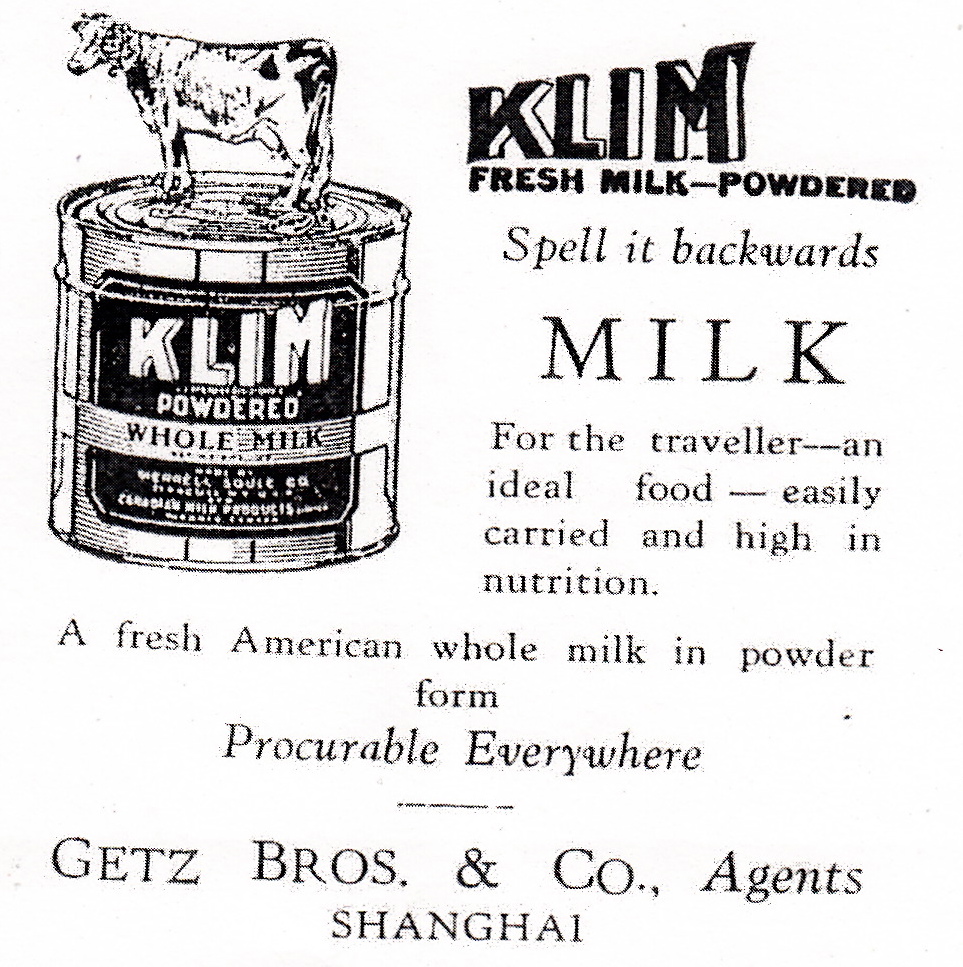
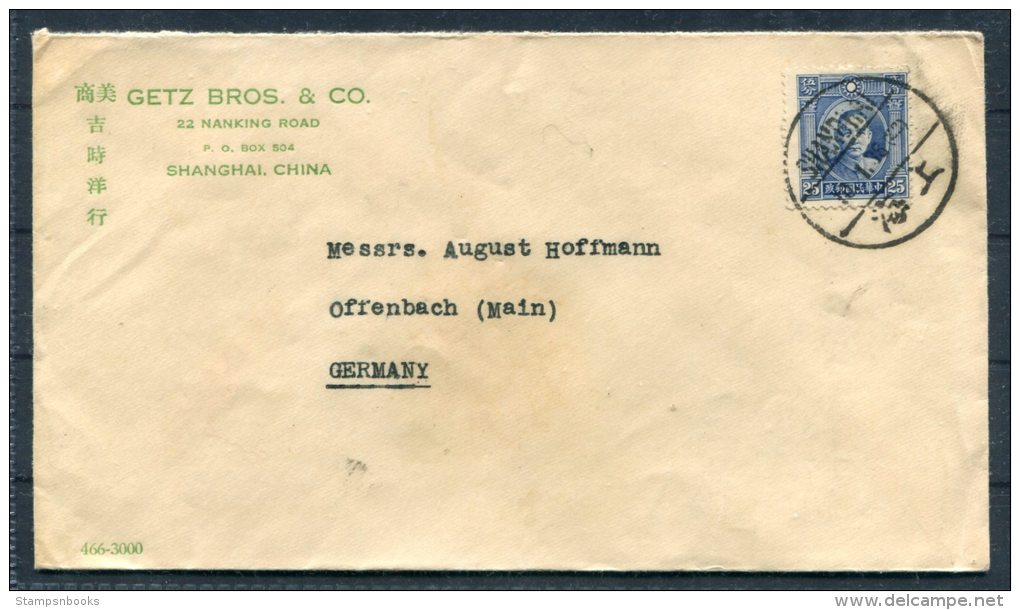
Posted: September 5th, 2016 | 8 Comments »
Sometimes an advert from old Shanghai leads you to a tale of old Shanghai life that is both fantastic, inspiring, dramatic and tragic. This advert, from 1930, for Luebbert’s Pharmacy is one such…
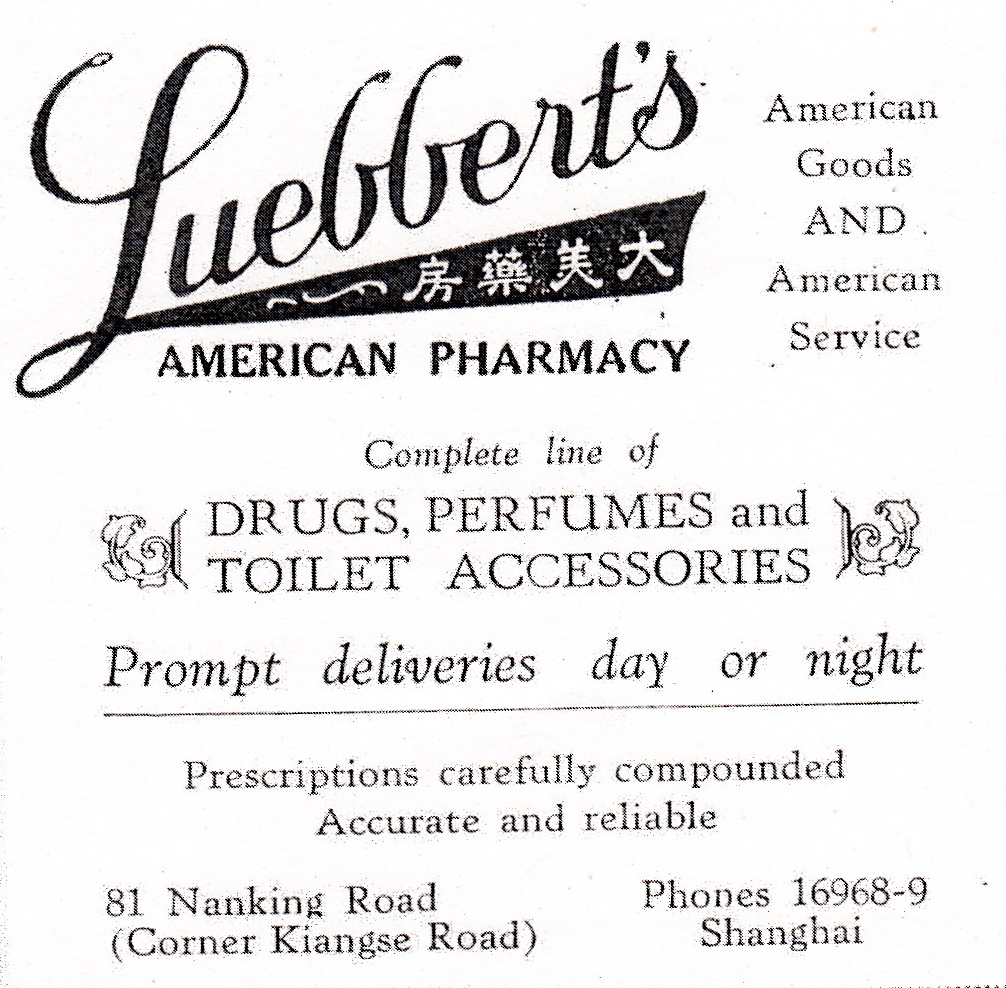
In 1920 33-year-old Edward G. Luebbert of New York State turns up in Shanghai. He’s graduated from the Union College of Pharmacy in Albany, NY; he’s a Great War veteran who saw service in Europe. He’s come to Shanghai to work for the American Drug Company. Things work out for Ed – around 1925 he starts his own business, Luebbert’s American Pharmacy with a prestige location on Nanking Road at the Junction of Kiangse Road (Nanjing and Jiangxi today). It moves locations a few times, but is always prominent. The business does well; everyone recognises the Luebbert’s liveried trucks delivering medicines around town. Ed marries a White Russian girl in Shanghai called Mania. It’s a good marriage; they have three kids – two girls and a boy.
Early in 1937 Ed had to return to the USA for an operation. He was worried about the worsening political situation with Japan and the possibility of war in Shanghai so he sent Mania and the children to Manila. War did break out in July 1937 and Luebbert’s store was destroyed in the bombing. Ed couldn’t get Mania to the US as the immigration quotas for stateless Russians were full up. She, with the children, had to stay in Manila.
On May 6th 1942 the Japanese occupied Manila and Mania and her children were trapped in the occupied city. They managed to survive, along with other Russian refugees considered non-combatants and neutrals, in the city. However, when the liberation of Manila came in 1945 they were caught between the fighting American and Japanese armies. The Russian sector of Manila was No Mans Land, much of the city was firebombed. Mania was fatally wounded by shrapnel from an American bomb and her two daughters badly burnt in the fires that raged. The children were taken to an American Army Field Hospital for treatment and then transferred to San Tomas internment camp to await transfer to the USA. They were eventually reunited with their father in Newark where he was living.
Ed Luebbert’s son, Edward H. eventually joined the Marine Corps (below) when he was 17 and fought in Korea. Edward G Luebbert worked as a pharmacist in Newark, he did eventually remarry, and died in 1960, aged 62.
